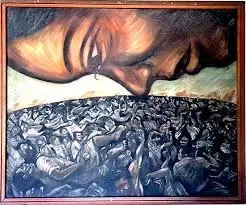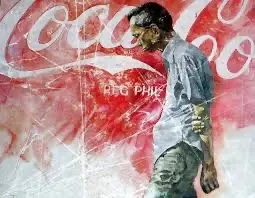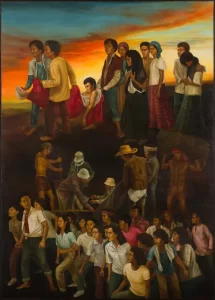Art Talks
Social Realism in the Philippines: An Artistic Response to Societal Issues
Social realism in the Philippines is a powerful art movement that emerged as a response to the country’s social, political, and economic issues. This art style, characterized by its focus on depicting the struggles and realities of the common people, has played a significant role in Filipino art, especially during periods of political upheaval and social change.
The Origins and Evolution of Social Realism
Social realism in the Philippines can be traced back to the early 20th century, but it gained significant momentum during the 1970s and 1980s. This period was marked by the oppressive regime of President Ferdinand Marcos, whose martial law declaration in 1972 led to widespread human rights abuses, economic disparity, and political repression. In response, Filipino artists used their craft to voice dissent and shed light on the plight of marginalized communities.
The movement drew inspiration from earlier social realist traditions worldwide, particularly those in Mexico and the Soviet Union, but it developed a distinct character rooted in the Filipino experience. Artists sought to create works that were not only aesthetically compelling but also socially relevant, aiming to inspire awareness and action.
Notable Filipino Social Realists and Their Works
1. Pablo Baens Santos
Pablo Baens Santos is one of the foremost figures in Philippine social realism. His works are renowned for their bold and unflinching portrayal of social injustices. His notable painting,
“Malumbay si Ina” (Mother is Sad, 1983), vividly depicts the Philippines as a mother mourning the loss of her sons, highlighting hundreds of thousands of individuals who were either detained and tortured, assassinated, or just vanished without a trace under Ferdinand Marcos’ dictatorship, which lasted from 1965 to 1986.

Pablo Baens Santo, 1983
2. Antipas Delotavo
Antipas Delotavo’s art is characterized by its critical examination of societal issues. It often focuses on the lives of the urban poor and the impacts of industrialization.
“Itak sa Puso ni Mang Juan” is a powerful piece that illustrates a peasant’s heart, metaphorically stabbed by a bolo knife, symbolizing the pervasive violence and suffering inflicted upon the rural poor.

Antipas Delotavo, 1978
3. Renato Habulan
Renato Habulan is another key figure in the social realist movement. His works often depict the struggles of the working class and the disenfranchised.
One of his best works, “Dulang Bayan” (A Nation’s Drama), is a painting that juxtaposes portraits of individuals or a multi-figure composition, illustrating the two extremes of the economic spectrum.

Renato Habulan, 1982
The Impact of Social Realism
Social realism has profoundly impacted Philippine society and the art world. These artists and their works have documented the country’s turbulent history and galvanized public awareness and activism. Their art serves as a reminder of the enduring power of visual expression in the fight for justice and human rights.
Today, social realism inspires new generations of artists who remain committed to using their art to reflect on and challenge societal issues. Through exhibitions, public art, and educational programs, the legacy of social realism in the Philippines endures, ensuring that the stories and struggles of the past are not forgotten and that the quest for a just society continues.
Social realism in the Philippines is more than an art style; it is a movement that captures the resilience and spirit of the Filipino people. By highlighting the works of notable social realist artists, we gain a deeper understanding of the country’s history and the ongoing struggle for social justice.
Written by Cherry Fulgar
For more information, contact Imahica Art at +63 917 894 5646, or email thegallery@imahica.art
Imahica Art is a contemporary art gallery in the Philippines, showcasing works by both emerging and established artists. As one of the newest venues in the Philippines, it significantly enhances the diversity and appreciation of contemporary art collections and investments, both locally and globally. Located at the intersection of Lee Street and Shaw Boulevard in Wack-Wack, Mandaluyong City, the gallery is fully accessible and open to the public for free unless otherwise stated.

